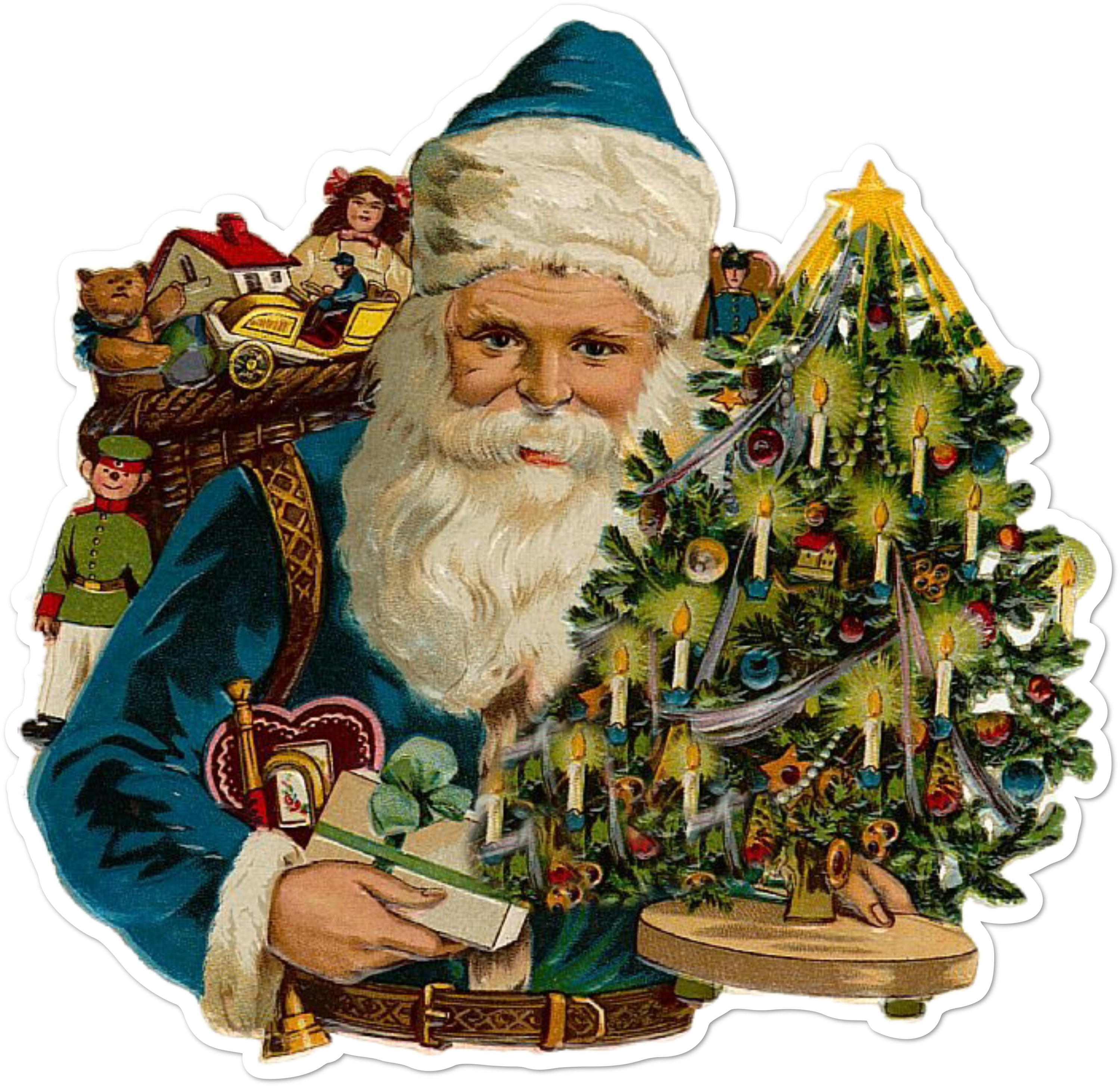I have heard it said that 'Santa Claus' takes some inspiration from St Nicholas of Myra. However the two don't seem very similar at all. Santa lives in the frozen north and has a flying sleigh, St Nicholas lived in a warm country. However I have also heard it claimed that 'Santa Claus' takes inspiration from the Norse god Odin:

historydaily.org
You heard me! Santa has been heavily influenced by traditions surrounding Odin, the Norse god of the Norse gods, a.k.a. the Allfather. As I write this, I imagine many readers with a [bless and do not curse][bless and do not curse][bless and do not curse][bless and do not curse]-eyed expression indicating a skepticism that the two seemingly different beard-laden individuals could have...

www.ecpubliclibrary.info
Being able to receive, hear and answer children's requests/prayers does seem to be something more like the behaviour of a 'god'
Comments?
The modern Santa Clause is an amalgamation between St. Nicholas of Myra and "Father Christmas", an English invention from the 17th century. Father Christmas is the personification of Christmas time, kind of like an advertising campaign after the English Civil War which hearkened back to the "good old days" before Cromwell and the Puritans came to power and outlawed Christmas as being "papist".
Images of Father Christmas depicted him as a jolly old man, emblematic of the spirit of merrymaking and mirth. He appears in Charles Dickens'
A Christmas Carol as the the Ghost of Christmas Present.
The fusion of St. Nicolas and Father Christmas happened in America, a fusion of Dutch and English traditions. The Dutch originally had a colony in North America, New Amsterdam, which was later taken over by the English and renamed New York. After the English took over it's not like the Dutch and their traditions just disappeared. So Dutch customs associated with St. Nicholas of Myra and his Feast Day on December 6th included children leaving their shoes in front of the door so that when St. Nicolas came he could leave them a coin (a festive practice that remembers St. Nicholas' charity, as traditions says he would leave money for those in need secretly at night). This evolved into the practice of hanging stockings on Christmas Eve, especially as the lore evolved and "Santa" began his practice of coming down the chimney. The whole chimney thing was also based on the hugely popular A Visit from St. Nicholas by American author Clement Clarke Moore. Moore also came up with Santa's sleigh and fleet of eight flying reindeer (Rudolph the Red-Nosed Reindeer would be added later, based on the song of the same name).
"Santa" didn't originally live in the North Pole. Originally he was placed in Lapland, because it was "really north". This region of Northern Sweden and Finland is the home of the Sami people, reindeer herders. So Santa got his reindeer because he was a Laplander. In the 19th century, as Arctic expeditions became increasingly common, the "farthest north" was moved to an even more remote and exotic location: the North Pole. It is also this Lapland connection that probably is the origin of his having elves who work in his workshop, elves being a common folklore pixie creature that, famously, has Scandinavian origins.
If there is any Odin influence on Santa Claus it is remote, very remote, and almost completely lost to the mists of history. Virtually everything about Santa Claus is a modern invention that dates from only the last couple centuries, based on the aforementioned fusion of Dutch St. Nicholas and English Father Christmas traditions blending together in the American melting pot. It was an American writers who later popularized all the famous modern Santa Claus themes: chimneys, the North Pole, wearing a red suit, etc. These have been exported internationally through American media, the American popular media apparatus has popularized the American Santa Clause the world over. So even in places such as the UK and Europe who had their own St. Nicholas and Father Christmas traditions and customs have adapted and adopted them to be more like the popular American Santa Claus.
As such the modern Santa Claus, while a thoroughly Christian invention, has very little in common with the historical St. Nicholas. However, Santa Claus still remains a potent symbol of Christmas, a personification of the spirit of Christmas, of love, good cheer, generosity, and Christian charity. So even if he isn't St. Nicholas anymore, he is still useful symbol of the season, and shouldn't be discarded.
-CryptoLutheran
 historydaily.org
historydaily.org

 www.ecpubliclibrary.info
www.ecpubliclibrary.info

